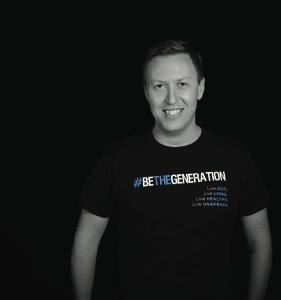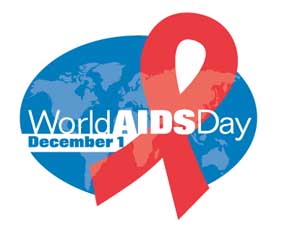
The last twelve months have seen some of the most public and progressive steps in the now decades-long battle against AIDS and the virus which causes it, HIV. This includes the mainstream and open discussion of PrEP (Pre-Exposure Prophylaxis) in culture with television programs like How to Get Away with Murder (ABC), a call to action by both medical professionals and AIDS activists for TasP (Treatment as Protection), and public figures such as actors Danny Pintauro (Who’s the Boss, Cujo) and Charlie Sheen (Two and a Half Men, Major League), as well as locally with the director of events at The San Diego LGBT Community Center, Ian Johnson ‘coming out’ to erase the misplaced stigma of the disease.
Now in its 27th year, World AIDS Day was first designated Dec. 1, 1988 by the World Health Organization (WHO) which is an agency of the United Nations. This year WHO continues with the theme “Getting to Zero” and throughout the world leading AIDS organizations challenge us to “Rethink HIV” and better understand the disease to help eradicate stigma. HIV patients struggle with being open about their condition for fear of being ostracized socially, loss of professional opportunities and even rejection in romantic relationships. While terms like T-cells may be familiar to some, others like ‘undetectable’ viral load (which is when there is fewer than 20 copies of the virus in a sample of blood) remain elusive and even confusing.
Child actor Danny Pintauro came out as openly gay in 1999 in an interview with the National Inquirer. This fall, Pintauro found himself ‘coming out’ again when he publically revealed on Oprah: Where Are They Now that he has been living with HIV since 2003. He now finds himself as an activist sharing his story and helping others live their truth as a person with HIV.
“One of my goals is to make everyone who is positive more comfortable talking about it. Someone who is healthy, taking care of themselves and undetectable should be proud of that,” Pintauro shares.
He adds, “You can’t get people to come out and talk about it until there are people they can look up to where they can say ‘ya know he is just like me and he has done it, so I too can live my truth’ (about living with HIV).”
Ian Johnson, who recently came out as HIV+, is grateful to Pintauro for helping to end the stigma of HIV. “I applaud Danny on the strength it took for him to come out about living with HIV. Many of us living with HIV remain in the “closet” because of the stigma we have faced. After we experience the challenges of dating, the negative attitudes and the shunning from our own community, many remain living in silence … afraid of how others will perceive them, not wanting to be labeled only as the person with HIV.”
Johnson adds, “It takes strength to live out, live proud and live unafraid. The hardest part about all this isn’t actually living with HIV, it’s living with the stigma associated with HIV.”

Pintauro is a huge proponent of HIV testing. He shared his opinion that if everyone knows their current status, there would be far fewer, if any, new transmissions. In reality a test is only relative to when it’s taken and an individual’s last sexual encounter. He says, “As a community (LGBT) who wants to take care of one another, then we are going to learn our status so that we can take care of each other.”
Testing remains the No. 1 way to reduce HIV transmission. However, testing also plays a key role in a new approach toward the battle against HIV/AIDS called PrEP.
Dr. Gary Blick of World Health Clinicians, one of the leading specialists and doctors focused on HIV/AIDS and co-founder of HIV EQUAL, an anti-stigma campaign says, “Bottomline, PrEP (which is the single-pill medication known as Truvada) has positively impacted the LGBT community knowing it can protect against HIV by reducing the chances of contracting HIV somewhere between 92-99 percent. While nothing is 100 percent, there are not yet any known cases of people taking PrEP daily who contracted HIV.”
He adds, “An HIV+ individual’s chances of giving someone HIV is reduced by 96 percent + just by knowing their status, getting into or back into care, taking much safer antiretroviral medications, and getting one’s viral load to undetectable. This is called TasP.”
As an HIV+ gay man, Pintauro comments on PrEP and TasP with enthusiasm. While he is thrilled that the conversation has been elevated to a national level with PrEP being on prime time television, he added it is important to understand what it really is. “People are realizing this is a godsend, being able to protect yourself in more than just one way from HIV.” Adding, “If you’re diligent about taking PrEP, transmission can be reduced by up to 99 percent. That’s amazing! There is a whole conversation that has to happen when you’re talking about PrEP. You have to go see a doctor to go on it. You can’t just go get it (from a store). Plus, you have to get tested on a regular basis. Further, in order to continue receiving your prescription, doctors require the test, so the patient is continuously monitored. Additionally, the tests also monitor other STIs (sexually transmitted infections).”
PrEP and TasP combined make for some of the most promising outlooks on reductions in transmission. “You have someone not only preventing getting HIV with PrEP, but you also have them going to a doctor on a regular basis being tested for HIV,” says Pintauro.
However, he challenges the notion that PrEP is the end answer and that guys can freely engage in unprotected sex. “There are those Web sites that are geared toward having unprotected sex and you see profiles that say ‘negative but on PrEP.’ That’s not the solution. Number one, you are opening yourself up to all of those other STIs, some of which are becoming untreatable such as the rare drug-resistant gonorrhea.”

Dr. Blick, an out gay doctor adds, “Our LGBT community needs to understand risks versus benefits and make informed decisions. Sex and intimacy may feel much better, but getting infected with an STI for life, like genitorectal herpes (HSV-2) or human papillomavirus (HPV) which causes anal cancer, needs to be considered, as does the rare drug-resistant gonorrhea. With the Hepatitis C virus now an increasing STI in our community, a person needs to first get the necessary knowledge to make an informed decision and think with one’s brain.”
As Dec. 1 approaches, Danny Pintauro’s message for others encompasses so much of the theme this year as well as the progress made in the last 12 months. He says, “While World Aids Day is a day to remember the millions of people we’ve lost to this disease, it is also a day to look ahead. We can beat HIV! Live life to the fullest by getting tested regularly. Cherish your life by doing everything you can to protect yourself. And love those you care about by getting on treatment!”
As Danny Pintauro, Ian Johnson and many of those living with HIV here in San Diego will attest, while the disease may have at one point felt like and even been a stigma in their lives, today they can be proud of their undetectable viral load and healthy lifestyle, all of which has been liberating while being life sustaining. World AIDS Day is Dec. 1.
Danny Pintauro can be followed on Twitter at @dannypintauro.











